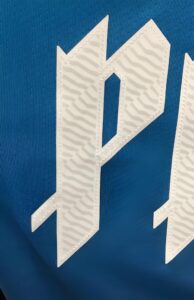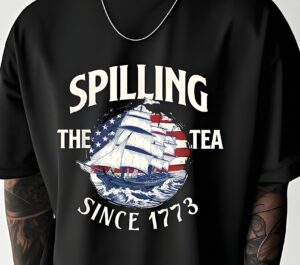1. What is White Plastisol Ink and Why Is It Essential for Screen Printing?
2. What Makes a White Ink Truly “Premium”?
3. How to Select the Best White Plastisol Ink for Your Printing Projects
Choosing the satisfactory white plastisol ink comes down to 3 predominant matters: cloth kind, printing approach, and performance wishes. Printing on 100% cotton shirts? You’ll need a preferred cause or cotton-particular white ink. For polyester and blends, look for low bleed or high-opacity poly white formulas.
Don’t overlook to don’t forget ink mixing and compatibility along with your shop’s mixing gadget. Gallon length, viscosity, and shelf life additionally play roles for busy operations. If you regularly handle rush orders or excessive-volume jobs, pick out a plastisol ink with short flash instances and coffee treatment temperatures to shop time (and strength) with out sacrificing first-class. Great white screen printing ink flexes together with your operation—always creamy, effortlessly formulated, and steady from gallon one to the remaining drop.
4. Understanding Opacity and Why It Matters
Opacity refers to how well the ink hides the fibers or colour of the garment beneath. High opacity white plastisol ink is vital for formidable, vibrant prints, especially while operating with darkish fabrics. A greater opaque ink method you could lay down a single, easy layer of white and achieve a glacier white result without over-printing.
Low opacity inks regularly war to cover colored fibers or dyes, ensuing in dwindled prints or the feared “t-blouse shadow.” The excellent white plastisol inks feature advanced pigment systems for maximum insurance and terrific-clean surface finish. If your save values a top class, shiny aesthetic, high opacity should be your primary ink precedence.
5. How Does Cure Temperature Affect Your Prints?
Curing is the technique of turning plastisol ink from a liquid right into a long lasting, flexible stable. For white plastisol ink, the therapy temperature is normally round 320°F (160°C), but low remedy options are growing in recognition for sensitive fabric and power financial savings.
Proper remedy guarantees wash-fastness and resistance to cracking or peeling. However, overheating can scorch the garment or motive dye migration—specially with polyester or combination fabric. Low treatment white inks assist you to flash cure fast, reduce press stay time, and decrease sizzling or shrinkage on premium cotton or tri-combination shirts. If you print throughout a couple of cloth kinds, having a flexible, low cure ink in your arsenal allows assure consistent outcomes on every occasion.
6. Low Bleed and Dye Migration: Why Does It Happen and How to Prevent It?

Bleed and dye migration are the arch-enemies of white display screen printing. Bleed takes place when garment dyes leach into the ink, turning vivid white prints into muddy purple or grey screw ups. Polyesters and blends are in particular liable to this, seeing that they include reactive dye molecules that turn out to be mobile underneath warmth.
To fight dye migration, top-tier white plastisol ink boasts a low bleed or bleed resistance method. Some inks are engineered mainly for poly or poly-cotton blends (categorised as poly white or low bleed) and consist of chemical blockers that trap dyes. When printing on tough fabrics, constantly take a look at for bleed, use a fine low bleed ink, and manage your therapy temperature to stop dye migration earlier than it ruins your work. Trust us—including this step for your printing projects saves you time, cash, and recognition in the end.
7. Cotton, Polyester, and Blends: Choosing the Right White Ink for Your Fabric
8. Mixing Systems and High Opacity—What Every Screen Printer Should Know
9. Tips for Printing, Flashing, and Achieving a Smooth Surface
10. White Plastisol Ink Brand Leaders: International Coatings and Others
While all brands of ink have something to offer, a few stand head and shoulders above the rest. Screen Printers most often talk of Wilflex because of their unrivaled opacity, Dunkin’ cream like consistency, and superior low bleed capabilities. Their white plastisol is highly regarded when very bright underbases are needed for avalanche stark prints, as well as, in premium prints which require flexibility and toughness.
International Coatings have a wide assortment of white ink that range from general purpose white to sophisticated poly white designed for top bleed resistance, and effortless ink mixing such as I want. These brands are dependable for cross cotton, polyester and blends, where bulletproof cure and glacier white finish is required. But regardless of the brand of screen printing ink you use, make sure that it has a high collaboration rate with consistency from quick flash and no issues with performace. Your press, and your customers, will notice the difference.
Important Notes: Using White plastisol ink for screen printing
- White plastisol inks are required when the intention is to depict sharp and bright prints on textiles made of cotton, polyester or blends—select the correct formulation for your needs.
- Premium white ink means high opacity, very creamy, covers dense strokes, easily peels off, and still retains softness when cured.
- Pretreat your ink to the fabric where it will be applied—white poly and low bleeding inks are critical to strategics on plastics.
- Correct cure temperature is the most important as too high will burn the garment, cause dye to move, or delaminate; low temperature curing inks have less restrictions.
- If you want the best prints, repeatedly test for the whitest outcome, you must make sure to have a good ink mixing system.
- Wilflex and International Coatings are leading and most reputable brands to trust when whitest prints are needed and consistency prints is key for professionals.
- You have to control every part of your printing process starting with mesh and moving to flash and squeegee in order to achieve best surface and finish quality.
- Merged fabric or even blended garment curriculum must have incorporated ‘resistance bleed; strategic use on athletics should never be neglected.
- Buy in gallon for more than one unit—shops with heavy traffic will benefit, but remember how critical batch consistency is.
- With the best whitest ink used from printers screen over fabric comes alive, strategic investments is needed, makes color leap off shoulder.


